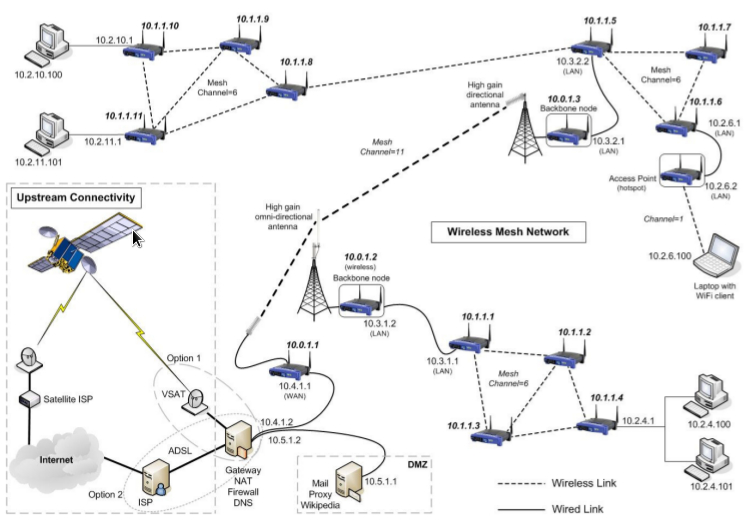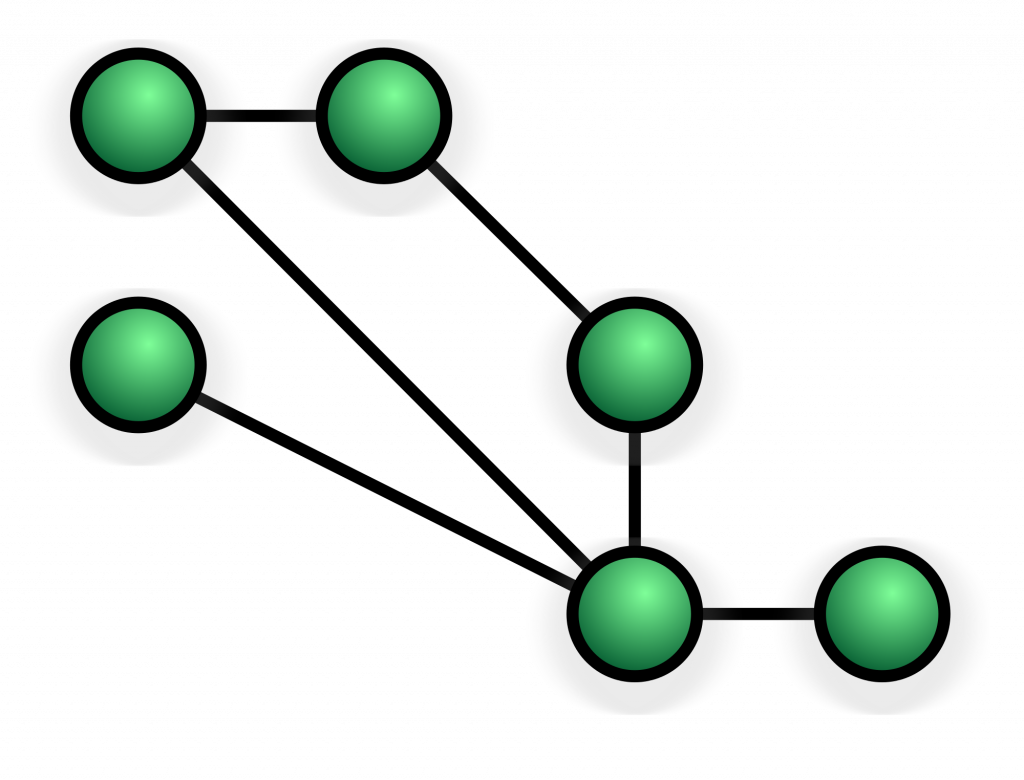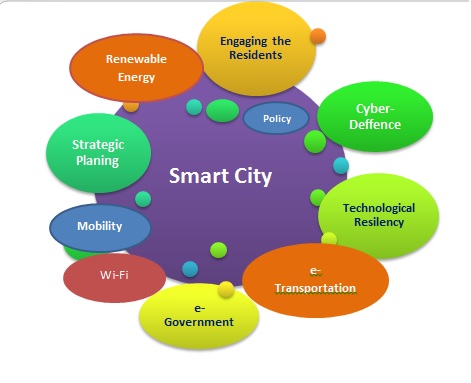WiFi has become an inseparable part of our lives, and this use is only going to grow with the emergence of technologies like the Internet of Things (IoT). At the rate at which the IoT market is growing, it won’t be long before all our home appliances are connected to our WiFi network. But the big question is whether our WiFi networks are resilient enough to take on so much traffic? Well, that’s why we have something called wireless mesh networking. If the name sounds too clichéd, don’t worry, it’s not another marketing trick to make you buy a particular group of WiFi routers. WiFi mesh networking is real and offers substantial improvement over the traditional WiFi networks.
What is WiFi mesh networking?
WiFi mesh networking is a network design that’s made up of different nodes connected to each other. In this network topology, there’s no central server.
The Internet is probably the best example of a mesh network, and it is also the largest one in the world. Information from the source gets bounced automatically from one router to the next until it reaches its destination.
Likewise, a WiFi mesh network also transmits data from node to node until the destination. However, the difference is that one node in this network has to be wired directly to the Internet. That wired node shares the connection with the nodes or cluster nearest to it. In turn, this cluster shares the connection with the next closest cluster and so on until all the nodes are connected to the Internet.

With such a topology, you don’t need all the nodes to be wired directly to the Internet. All that’s needed is one node that’s connected to the Internet and some source of power supply to keep the network running.
In this network type, you can not only share the Internet connection over a wide geographic area, but your Internet will also be stronger and faster when you have more nodes.
How? Doesn’t this defy our idea that the Internet will be slow when it has to be shared by more nodes?
To answer this question, let’s look into how mesh networks work.
Workings of a WiFi mesh networking system
Mesh networks were first created in the 1980s, but they became commercially available only by the 1990s. Still, it was not widely used until the last few years because of availability and cost restrictions.
The mesh networks available today are similar to the ones used in the 1980s, except that it is much cheaper and commercially available. In this topology, each base station is called a node and this node exchanges information with adjacent nodes. No information is retransmitted at any time, so the entire process is fast. This is also why you’ll have more speed than traditional routers. WiFi mesh networks have also recently become available for home users.

In addition, all the nodes, even those that are not involved in sending and receiving information, know what is transmitted. This knowledge comes handy when one node is down or when the system chooses a different node for faster transmission. Needless to say, this network is fail-safe.
[tg_youtube video_id=”tYLU755T6_I”]
Advantages of WiFi mesh networking
WiFi mesh networking offers many advantages over your traditional router. Here are some reasons to make this switch.
- It requires very few wires, and this means the setting up effort and cost are greatly reduced. This saving is especially significant when you have to cover large areas.
- Contrary to existing opinions, your network will be faster as you add more nodes and devices.
- These mesh networks use the same 802.11a, b, and g standards for wireless routers, so there’s nothing new to learn here.
- This network is most convenient in outdoor areas, where Ethernet and wired connections are difficult to set up.
- Mesh networks are self-configuring, so they can detect new nodes in the network without any help from the network administrator.
- It works great when some nodes fail, as these networks can find the fastest and the best possible route every time. In other words, they are self-healing networks that ensure your information is transmitted at the earliest.
- The network as a whole is fast because data packets don’t have to go back to a central server.
- This network is easily expandable and adaptable depending on your coverage needs. All that you have to do is add or remove nodes to the network.
- You can choose to wire devices such as VoIP phones, video cameras, and more to specific nodes using Ethernet cables. Such a setup gives you enormous flexibility to connect different devices to the same Internet connection.
Due to these advantages, WiFi mesh networking is likely to replace our traditional WiFi routers in the near future, especially as we go deeper into the world of IoT.
Practical applications of WiFi mesh networking
Now that we know what a WiFi mesh network is and the advantages that come with it, let’s look at a few areas where we can use it.
Smart cities
Almost every major city is on the threshold of becoming a smart city, and one of the catalysts for this transformation is the WiFi mesh network.

In this implementation, you can connect almost the entire city and all its residents to the same Internet connection. Many municipalities have even started creating public WiFi spots using this mesh network.
Economic development
WiFi mesh networking can be a catalyst for economic development in developing and underdeveloped countries. When you have this network in place, a single connection to the Internet is enough for all houses and offices within a given geographical area. Even solar-powered nodes are enough to keep entire villages online all the time.
Difficult terrain
WiFi networking can be useful in difficult terrain where it’s hard to lay cables. Sometimes, these places can be too isolated for service providers to operate, too. In such situations, this network is the best way to provide connectivity.
University campus
WiFi mesh networking is ideal for university campuses simply because they don’t have to bury cables under old buildings. At the same time, everyone can remain connected with indoor and outdoor nodes.
Hotels, hospitals, and more
This network works well across hotels, resorts, hospitals, and other clusters of buildings that were not built with Internet connectivity in mind. Instead of wiring through these buildings to connect every area to the Internet, you can opt for WiFi mesh networking.
Traffic monitoring
Highway-based wireless mesh networks can connect a bunch of surveillance cameras and car sensors to help law enforcement monitor traffic conditions, and even inform residents about dangerous driving conditions. It can also be used to give drivers the best route to reach their destination.
In fact, the application of WiFi mesh networking is only limited by our creativity and imagination.
Have you tried these routers? Let us know what you think in our comments section.



